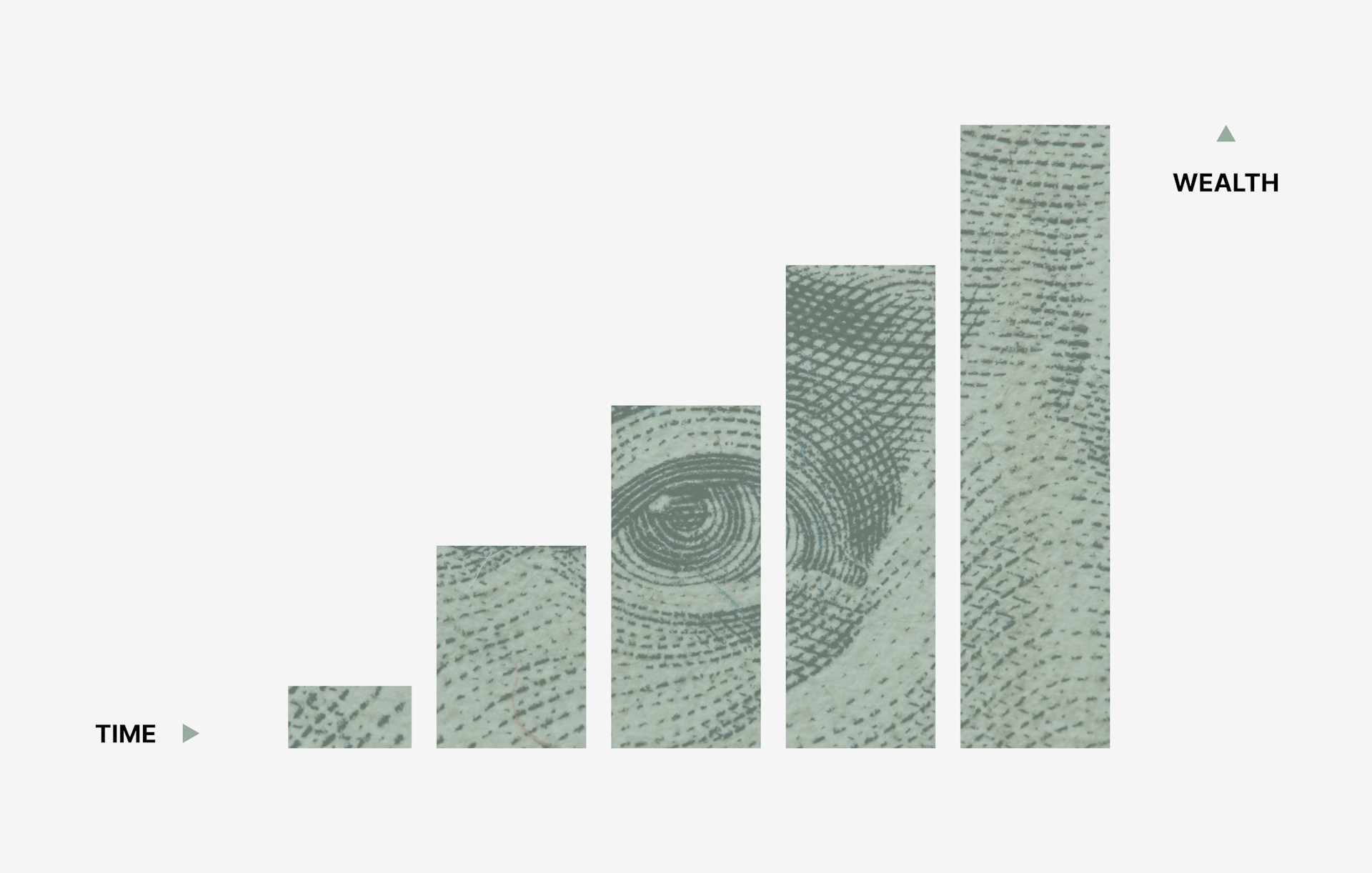Retirement Planning
5
min read
How to manage retirement debt: Strategies and decisions

Brandon Lawler
September 25, 2025

Outliving your savings is often a major concern in retirement, prompting some retirees to hold onto debt instead of paying it off. Even before retirement, some people ask themselves a similar question: “Should I pay off debt or save for retirement?”
In this article, we’ll consider both issues and show how you can both fund your retirement and strategically evaluate debt to ensure a secure financial future.
{{key-takeaways}}
Why debt management matters in retirement
Paying down debt in retirement means you will likely have less cash available to cover expenses. Even before retirement, debt payments can limit your ability to save and invest — directly impacting your financial well-being.
While a debt-free retirement is ideal, it’s not always realistic. A strategic plan can help you manage debt and reduce financial stress. Gainbridge offers a holistic planning approach that includes annuities to help you plan for retirement and resources to help you with different financial strategies such as debt management methods.
How to assess your debt load before retirement
Balancing retirement savings with paying off debt begins with taking an accurate and honest inventory of everything you owe. This lets you calculate a realistic debt-to-income (DTI) ratio and prioritize both saving for retirement and debt management.
Follow these steps to calculate your debt load:
List all your debts
Go through bank accounts and statements to catalog all your debt — including mortgages, loans, and credit card debt. No amount is too small. Include department store credit cards, gas cards, and buy now/pay later loans.
Sort your debts
Use a spreadsheet, online budget app, or software with debt management tools. There are several methods to help you rank and pay off your debts. Each has its own advantages depending on your financial goals and psychological preferences.
Here are three common approaches to consider:
- Debt avalanche method: Make any extra payments on the debt with the highest interest rate first while making minimum payments on the rest. This can help save the most money over time by reducing the total interest you pay.
- Debt snowball method: List your debts from smallest to largest and pay off the smallest first. Once it’s paid off, move to the next smallest. This approach motivates some people and helps them build momentum toward paying off their debts.
- Monthly payment method: Focus on paying off the debt with the lowest monthly payment. This creates a similar psychological effect as the snowball method, though it’s not as common.
Estimate your income
To create a sustainable debt plan, you need to know how much money you have coming in. Include all income sources, such as work, retirement account distributions, pension payments, and annuity payouts.
Calculate your debt-to-income ratio
Your DTI tells you how much income goes toward debt payments. To calculate, divide your total monthly debt payments by total monthly income. You can also use an online calculator to determine your ratio. Most experts suggest a DTI ratio below 36%, with 20% or lower a more conservative target.
{{inline-cta}}
Can you use your 401(k) to pay off debt?
You can use your 401(k) retirement account to pay off debt. With a 401(k) loan, you can borrow money from your retirement account with no credit check and typically a low interest rate. You typically have five years to pay off the loan, with the principal and interest going back into your 401(k).
While this is one way of using retirement funds to pay off debt, it can come with risks. If you leave your job, your plan might require you to pay the loan back immediately. If you don’t, the IRS considers this a default, which triggers a taxable event and a 10% penalty if you’re under 59½. Another disadvantage: When you take money out of your retirement plan, you stop investing it, so you miss out on potential returns.
You can also take a 401(k) withdrawal. This isn’t a loan, so you don’t have to pay the money back. However, the IRS may tax the amount and applies a 10% early withdrawal penalty if you’re under 59½. This can reduce your retirement savings and may impact your long-term financial security.
{{inline-cta}}
Should I pay off my mortgage before I retire?
Paying off your mortgage before retirement can free up monthly cash, but there are some tradeoffs to consider.
Pros
The advantages of paying off your mortgage early can include:
- Peace of mind: Entering retirement with no mortgage eliminates the largest recurring expense in many households. That could mean several hundred — if not thousands of dollars — in extra cash flow each month. You could use this money for debt management or investing.
- Lower expenses: With fewer fixed costs, your retirement savings can last longer, giving peace of mind to many retirees who worry about outliving their money.
- Guaranteed return: Paying off your mortgage eliminates future interest payments. That money you save represents a fixed gain that avoids market volatility.
Cons
Before paying off your mortgage early, weigh the downsides, which may include:
- Opportunity cost: If you make the right investments, you might earn more investing the money rather than paying off your mortgage early.
- Lost tax deductions: When you pay off your mortgage, you give up the possibility of deducting the interest you pay to lower your taxable income.
Creating a personalized debt-free retirement plan
With a help and resources from Gainbridge, you can work toward a debt-free retirement — or one where you can easily manage your monthly payments.
To lay the groundwork, consider these steps:
- Set payoff targets: Assign a deadline to each balance and use a debt management method to help you pay off your debt.
- Align with retirement goals: Time debt payoff around key events — collecting Social Security, accessing retirement accounts like IRAs, or taking annuity payouts. You can also align paying off debt with a new purchase, such as a second home or vacation.
- Build an emergency fund: Set aside money to cover unexpected expenses so you won’t have to rely on loans or credit cards.
By reducing borrowing costs and freeing up income, you can increase your chances of having enough savings to fund a long retirement.
A debt-free retirement with Gainbridge
Deciding whether to pay off debt or save for retirement can depend on how much you owe and how much money you have coming in. While there’s no universal answer, high-interest debt can hold you back before and during retirement.
Explore how Gainbridge digital-first annuities can be part of your income planning and also provide resources to help you get rid of debt before or during retirement.
This article is intended for informational purposes only. It is not intended to provide, and should not be interpreted as, individualized investment, legal, or tax advice. For advice concerning your own situation please contact the appropriate professional. The GainbridgeⓇ digital platform provides informational and educational resources intended only for self-directed purposes.
Maximize your financial potential
with Gainbridge
Start saving with Gainbridge’s innovative, fee-free platform. Skip the middleman and access annuities directly from the insurance carrier. With our competitive APY rates and tax-deferred accounts, you’ll grow your money faster than ever.
Learn how annuities can contribute to your savings.

Individual licensed agents associated with Gainbridge® are available to provide customer assistance related to the application process and provide factual information on the annuity contracts, but in keeping with the self-directed nature of the Gainbridge® Digital Platform, the Gainbridge® agents will not provide insurance or investment advice

Explore different terms and rates
See how your money can grow with Gainbridge
Try our growth calculator to see your fixed return before you invest.

.jpg)


%20(1).jpg)


















